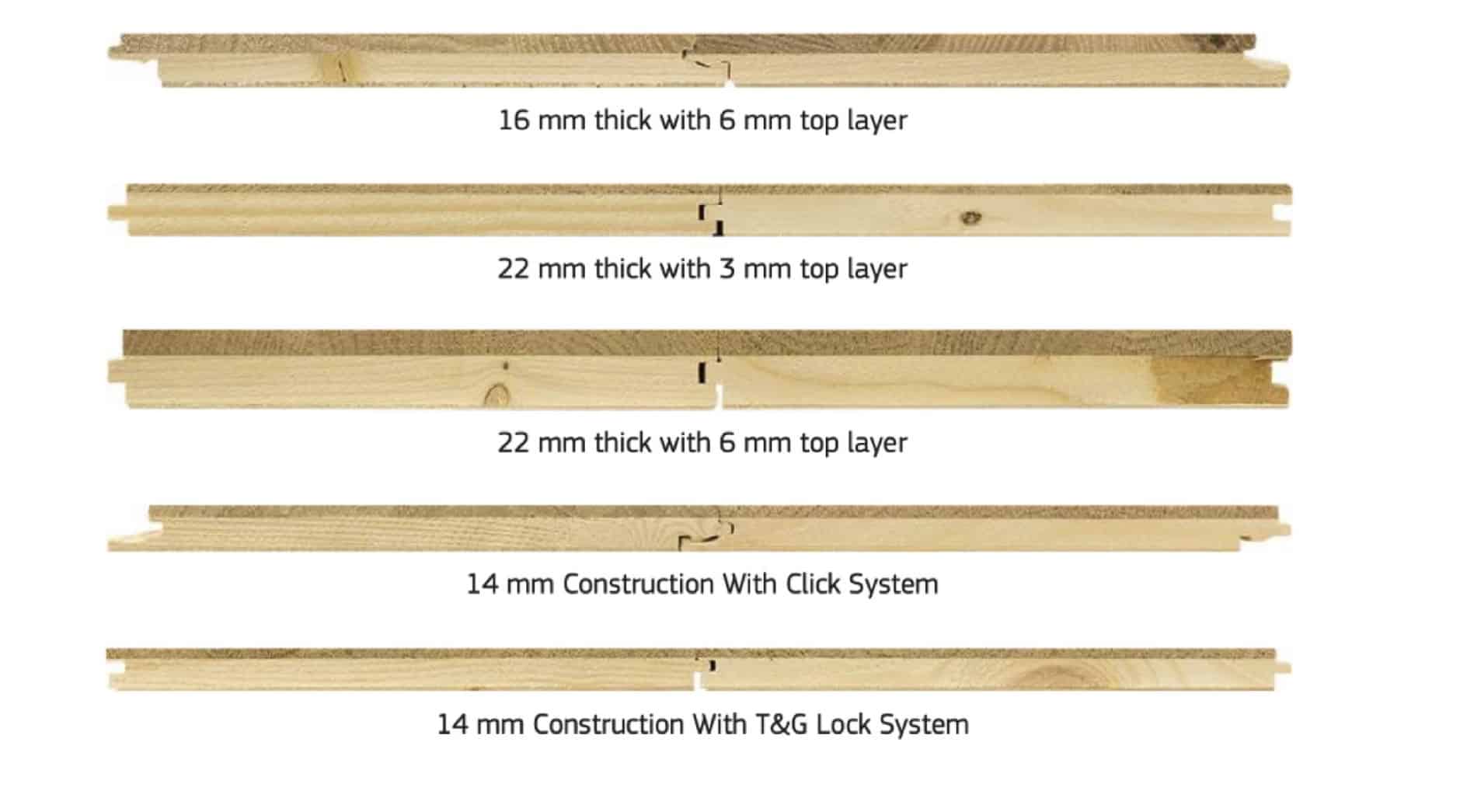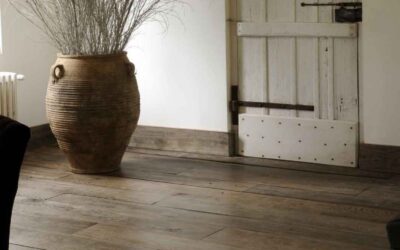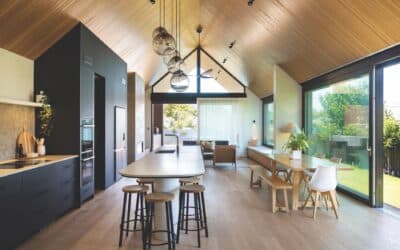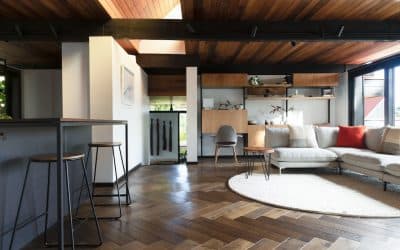At Vienna Woods we often find that there are some misunderstandings about what is commonly called Engineered Flooring. In the following article we will outline exactly what engineered flooring is and clear up any misconceptions.
The concept of engineered timber has been around for some time. It wasn’t until the early 20th century when engineered timber began to be used for flooring. See our article on The History of Engineered Flooring for more information.
Engineered flooring is term used to describe a flooring board comprising of layers of timber glued together to form a robust “engineered” plank. The top layer is usually a species of hard wood.
Fusing the layers together in this way is also called laminating. builders frequently work with laminated timber for everything from various ply wood application through to ceiling beams. Laminated timbers are often used for their added spanning properties (think thick laminated beams) and also their structure stability (think of sheets of plywood). However, some confusion exists when using the term “laminated” with flooring. There is a category of flooring named “laminated” which refers to a synthetic top layer laminated to a high density fibreboard backing. Engineered timber flooring is technically laminated, but it does not fall under the category of laminated flooring. Even builders (who commonly use and discuss laminated products) will sometimes refer to engineered timber flooring as “laminated”.
The Key Features of Engineered Timber Flooring:
- Layers: The typical engineered timber floor plank is made up of three or more layers. These layers are laid at right angles to each other to improve strength and resilience.
- Top Layer (Wear Layer): The topmost layer is a veneer of the desired hardwood. This could be oak, maple, or any other type of wood. This layer provides the look and feel of solid hardwood flooring. The thickness of this layer can vary, but it’s generally between 2mm to 6mm. This layer can be sanded and refinished, depending on its thickness.
- Core Layers: Beneath the top layer are several core layers, usually made from plywood, hardwood, or high-density fiberboard. These layers provide stability, reducing the wood’s natural tendency to expand and contract with changes in humidity and temperature. This makes engineered wood flooring more suitable for areas with varying climate conditions or for installation over underfloor heating systems.
- Bottom Layer: The bottom layer of engineered wood flooring is usually made from the same material as the core layers. It helps balance the board and prevent warping.
Engineered timber floors include a top layer of hardwood; typically 2.5 to 6mm, and a backing board which will sometimes be multi layered ply and some times solid core. The backing board is usually made from a fast growing softwood. The benefits of this construction are;
- Stability: The cross-layer construction provides high stability compared to solid wood, making it less prone to changes caused by humidity and temperature.
- Versatility: Engineered wood can be installed over various types of subfloors, including concrete.
- Sustainability: Since the top layer is a thin veneer, less hardwood is used compared to solid wood flooring. This can be more sustainable if the wood is sourced responsibly.
- Compatibility with Underfloor Heating: The construction of engineered wood makes it suitable for use with underfloor heating systems.
There are a number of different engineered timber types with connection systems, thicknesses and construction types varying a great deal. The more common architypes are pictured below;

Engineered wood can last as long as solid hardwood, but its lifespan can be shorter if the top layer is too thin to be refinished.
An additional consideration is variability in quality. Since engineered timber planks are manufactured, there can be a wide variety in qualities. Everything from the quality of the manufacturing through to the width and thickness of the flooring and the wear layer. Because of this variability, it is important to select an appropriate supplier if you are considering engineered flooring for your home.
Engineered timber flooring offers the beauty of hardwood with added stability and versatility, making it a popular choice for various settings, including residential and commercial spaces.


